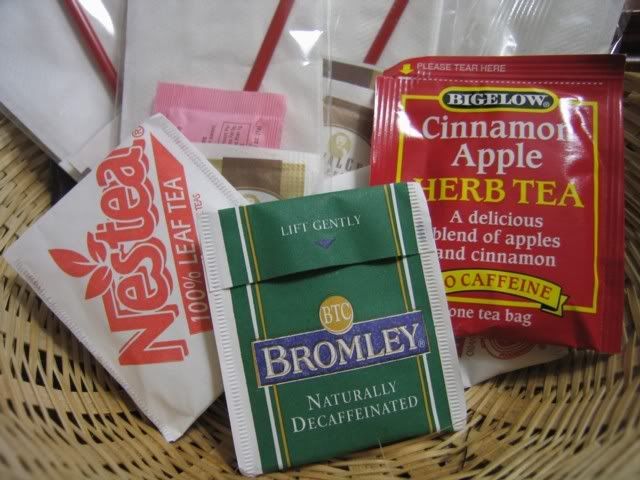Yesterday was the 10th anniversary of the return of Hong Kong to China. It’s been 10 years already, even though it seemed only like yesterday when the handover ceremony took place on a very rainy night. There were many things that set Hong Kong apart from China. There still are, even after 10 years. One such thing is the way tea is served in restaurants.
In Hong Kong, if you go into a Chinese restaurant or a Hong Kong style restaurant serving localized western or Chinese food (typically known as “cha chan teng”*, literally tea restaurant), tea is automatically served. The type of tea served depends on where you are. If you walk into a usual Chinese restaurant, the tea served is determined by you among the usual selection of “polay (puerh)”, “soumeh (longevity brow, or soumee, etc, a white tea)”, “teek guoon yum (tieguanyin)”, etc. You pick among the ones they have. In a “cha chan teng”, it’s usually some severely watered down red tea. It’s more like flavoured water. Tea is often free, or priced fairly low with a “tea and (Chinese) mustard” charge on the bill. It’s usually the same no matter what you order.
In China, however (with the exception of Shenyang, interestingly enough), teas have to be ordered. Even at pretty bad restaurants, the teas are often quite expensive, often rivaling a main dish or more. A pot of puerh can often cost you 50 RMB or even 100 (at the fancy places) even when it’s just a really bad, insipid cooked tea. I’ve been to places where the whole meal for two costs maybe 200 RMB, and a pot of tieguanyin would cost you 250. They’re almost never worth that much, and very overpriced. It makes ordering tea a real hazard here, without first checking the prices. You could be adding a lot of cost to the food bill without knowing it, and not getting nice tea in return. I often never order tea here at restaurants, but eating without drinking some tea makes me feel like I’m missing something.
Tonight, for example, as we’re having a dinner gathering with a few other grad students from my school here in Shanghai, we ordered a pot of longjing. I think it was something like 50 for a pot, but the tea we got wasn’t even longjing. It was at best what they would call a “Zhejiang longjing”, which basically means super low grade longjing that is merely a green tea, and called longjing for the simple reason that they’re grown somewhere in Zhejiang. Everybody noted how cheap the tea is. The food was good, the tea was not. It’s a shame that even when charging somebody for the tea, they couldn’t give us something slightly better.
I hope that eventually, China will have restaurants that start offering good tea for not much money (at least proportional to the quality and not outrageous). Right now though, I’d advise anybody coming here to avoid teas in restaurants.
*This is non standard romanization, as I am merely trying to replicate the Cantonese sound and not following any romanization scheme. Besides not knowing any well enough, there are a few competing ones and I feel that none of them make intuitive sense for people who aren’t already familiar with Cantonese.


 RSS - Posts
RSS - Posts
I took you at your suggestion and have been reading some of your old post-Covid posts. I haven’t been to…